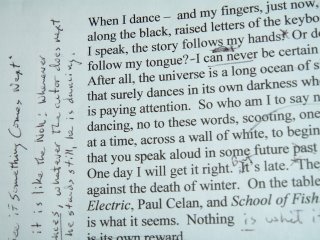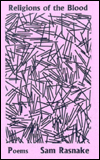2046... past, present, future
After viewing Wong Kar-Wai’s 2046, there’s only one thing I won’t give away…
One of the film’s primary strengths is the visual texture created by Wong: sensual, rich, inviting. He utilizes every portion of the screen, completely absorbing me in the view. He has a sense for the eye that is, for the most part, unequalled in the cinema. Light in a Wong film, somehow, becomes a metaphor for loss. Such an odd notion. The sets of 2046 – nearly all interior – are withdrawn, shadowy, confined – but commanding. Like the characters, the viewer can’t and doesn’t want to leave. The acting, thoroughly superb, fully realizes Wong’s atmosphere, and makes me a believer.
I enjoy the look of Wong's films, and 2046, a companion work to his masterpiece In the Mood for Love and Days of Being Wild, bears his signature – a cinematic style that is unique and on a level with the greatest of international directors. There’s more than a casual nod to Kubrick’s 2001: A Space Odyssey, Lang’s Metropolis, Hitchcock’s North by Northwest, Scott’s Blade Runner, Godard’s Le Mépris, and the fiction of Philip K. Dick; yet, this film is clearly Wong’s and could not have been made by any other director.
The film’s sounds are haunting. The score and use of song is effective – reminiscent of Bernard Herrmann’s music for Hitchcock’s Vertigo. I don’t think this is coincidental. The first time I watched Wong’s In the Mood for Love, I sensed some sort of connection with Vertigo. Love of death (of a sort – one physical and one a missed opportunities in the form of a life not lived), Hitchcock’s use of interiors and corridors, and, most particular, loose ends not connected. With 2046, Wong deepens his use of colors and interiors to create a poem-like visual style. There’s no doubt in 2046 about the notion of missed opportunities and the life not lived. Each character moves on similar or related paths, but can’t harmonize – except in their separation. Because of this, the film’s ending is necessary for the story.
In 2046, atmosphere becomes primary for Wong, who is both director and screenwriter, but also for the story within the film that is being written. As for atmosphere, the screen is filled with food & drink, rain, darkness, beds – all becoming tropes for the physicality of the characters. Trains (another Hitchcock connection) androids, alcohol, doors, an eye peeping make voyeurs of us all. We are what we do, where we go – or don’t go. Emotions are always presented through light, shade, soup, smoke, noise.
One stunning shot – in close-up – is a pen poised above a page. Hours pass. Yet the words cannot come. The pen, in keeping with Wong’s style, is never shown in full. Like many of the images in this film – the audience rarely sees the full picture or presentation of an image. The view is distorted, cut-off, hidden, filtered. Synecdoche – certainly. The pen is the character, is the sexual urge, is the story, is the missed relationship.
You whisper a secret into a hole, and no one will ever know.
This film shouldn’t be missed.










3 comments:
I am a fan of Wong Kar Wai's films, but I definitely enjoyed "In the Mood for Love" more than "2046." I loved the visual style of the latter film, but I was more emotionally involved with the characters in the former. However, I do give Wong big thumbs up for not compromising his vision. It was interesting to see how Tony Leung's character had transformed, but I thought reducing the great Maggie Cheung to basically a cameo was a total waste. She was brilliant in "In the Mood for Love."
I can't disagree with you at all on this, Collin. In the Mood for Love ranks on my short list of films -- an unforgettable work. It's a work of genius.
thanks for the film pitch, sam. i've been meaning to rent "in the mood for love" for ages. didn't know about 2046 -- sounds like a beaut! let's see if i can find it here.
a.
Post a Comment